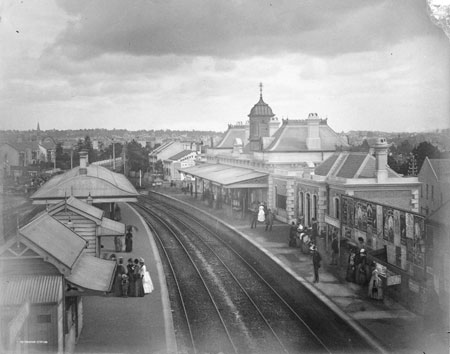Faces in the street
'Faces in the Street', one of Henry Lawson's most famous poems, has strong connections to Petersham Railway Station, in Sydney's Inner West. A plaque on the platform commemorates the fact that it was while waiting there for a train, one rainy night in 1888, that Henry Lawson, then a young man aged 21, struck the poem's keynote stanza:
They lie, the men who tell us in a loud decisive tone
That want is here a stranger, and that misery's unknown
For where the nearest suburb and the city proper meet
My window sill is level with the face in the street;
Lawson had arrived in Sydney from the bush five years earlier. At first he lived with his mother and siblings in Phillip Street, commuting daily by train to Hudson Brothers’ Railworks at Clyde, where he had a job as a carriage painter. Among the sharpest impressions of Lawson’s life in this period are the faces of the poor he encountered every day on the streets of Sydney, especially those of overworked and exploited women. When Lawson later became unemployed himself, he was able to draw on personal
experience for the composition of 'Faces in the Street'
Some years later, Lawson recalled the circumstances of writing this now iconic verse in the first volume of his 'A Fragment of Autobiography'.
In 'Faces in the Street' Henry Lawson took on the lie that Australia was the land of plenty and classlessness. He starts off sorrowfully, using the street as a metaphor for the lives of the poor but soon takes on a more angry tone as he proclaims the coming of a revolution which he is sure will change things.
In 1917, the strident opening line of 'Faces in the Street' became a bone of contention between Henry Lawson and his publisher, George Robertson, who requested the author to amend the first line before it was republished in Lawson's Selected Verses (1918).
> Trace the evolution of Lawson's celebrated poem 'Faces in the Street' to its final form 
